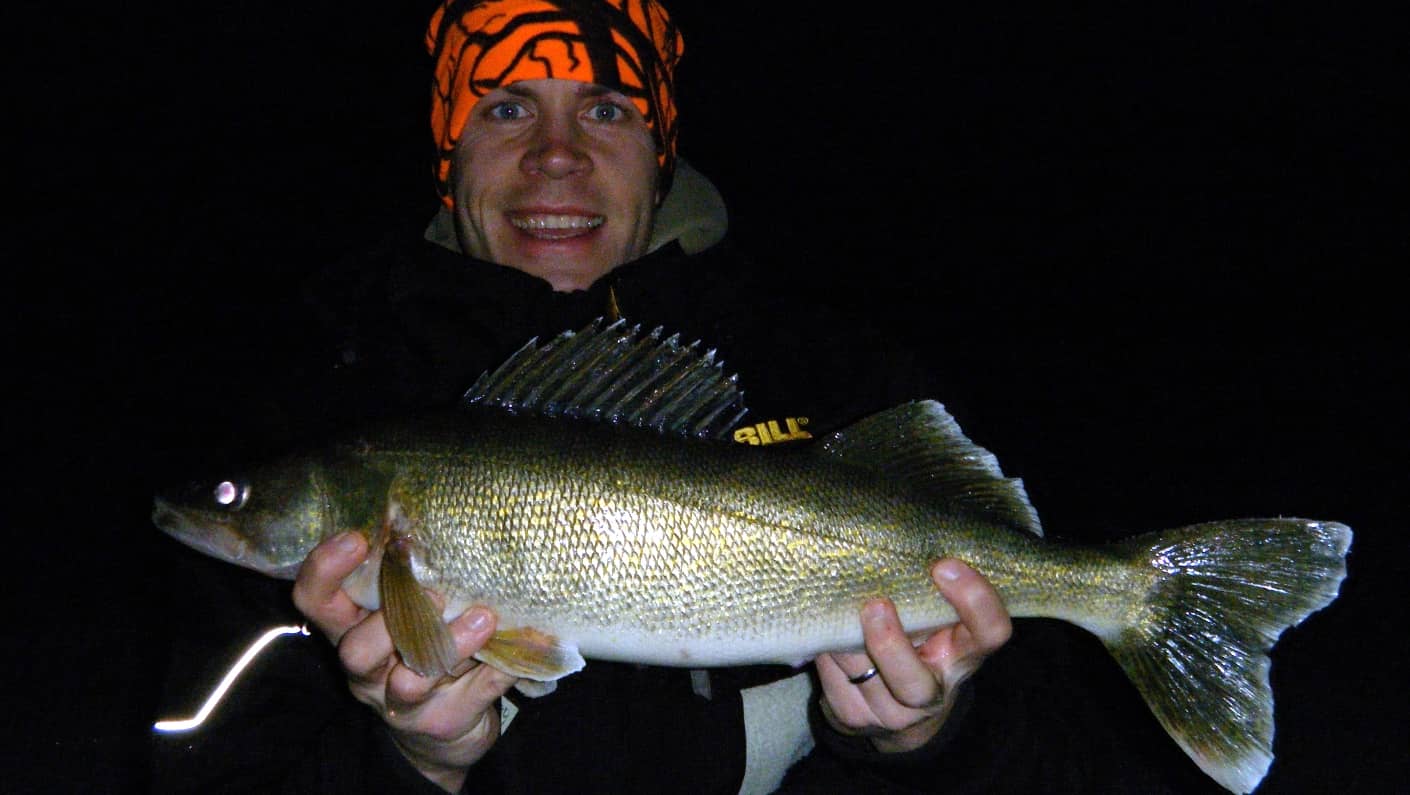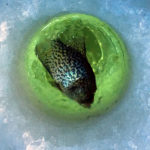
The author with a 26 inch walleye from Lake Ashtabula near Valley City. The lake remains a top destination in the district with a variety of fish to angle for each winter. Simonson Photo.
By Nick Simonson
In the fall of 2019, the southeast corner of North Dakota received significant rain which not only complicated the hunting efforts of many in the region, but also filled up sloughs, lakes and wetlands to the highest point seen in recent years.
This occurrence resulted in the creation of unstable ice which caused local agencies to restrict access to certain bodies of water, including Jamestown Reservoir, and excessive snow limited access to a number of fisheries over the winter.
However, the benefit of the precipitation is being seen this year as the area eyes up the hardwater season, according to BJ Kratz, Southeastern Fisheries District Supervisor for the North Dakota Game & Fish Department (NDG&F).
“Through the summer, water levels receded because it’s been fairly dry, but certainly not lower than they were a year or two ago, so everything is still pretty good,” Kratz relates ahead of the ice fishing season, “we had a lot of habitat this year that was inundated – new stuff this spring – which translated into good productivity for the existing fish populations, which ultimately results in good growth rates,” he concluded, suggesting that great winter opportunities exist for anglers of all stripes across the region.
Walleyes
Kratz notes that NDG&F employees have seen an uptick in the numbers and sizes of walleyes stocked in lakes big and small throughout the southeast, and many waters are offering up some excellent fishing opportunities. At the top of his list, he places the Twin Lakes system near LaMoure for those seeking consistent walleye action in the area, as catch rates are continually improving with many different sized fish and a shot at some big walleyes. The average size in recent surveys topped 18 inches in length. In northern Stutsman County, Mallard Marsh will continue to be a destination for walleye anglers this winter, with really good catch rates in this summer’s survey and an average length of 17 inches per fish. Other options include Kraft Slough near Oakes with abundant walleyes averaging 20 inches in length.
Perch
While the NDG&F focus has shifted to walleye stocking in recent years, many small lakes around the southeastern fisheries district still provide plentiful perch opportunities and a shot at some large fish, according to Kratz. For big yellow perch and a bucket full of eaters, he suggests anglers check out Erickson Slough near Edgeley, as new sampling shows really good numbers of perch of 10 inches or more, with a shot at some striped footballs in that 12-to-14-inch range. For anglers looking to explore, a lot of small sloughs around the Cleveland area have good perch fishing opportunities. Additionally, an old favorite for many, Lake Hobart west of Valley City, has seen an increase in size, as Kratz says anglers may be pleasantly surprised to again find perch in that 10-to-12-inch range this winter.
Crappies
For anglers seeking speckled fish, the southeast boasts both great numbers and good size in one of its premier reservoirs, which retains its reputation this season as a top crappie destination for anglers in the region.
“According to our crappie survey that we do annually in May, our abundance is right up there where it has been the last four or five years, indicating there’s a pile of fish in Jamestown Reservoir,” Kratz relates of both black and white crappies which can be found in the impoundment.
With the winterkill of 2018 in the rear-view mirror for Pipestem Reservoir, Kratz is hopeful for a rebuilding process that will restore crappies to that water, however, a fishable population is a long way off. In the meantime, in addition to Jamestown Reservoir, anglers can find decent numbers of crappies in Lake Ashtabula, Lake LaMoure and the nearby Dead Colt Creek.

Pike
With recent high waters, and a slowdown in stocking of pike throughout the region to better cater to angler demand for other species, Kratz is still finding that pike are naturally producing good opportunities for tip-up anglers and others seeking the water wolf on the ice each winter.
“When we have good runoff events and a surplus of water in the spring, those brood stock that are in these lakes tend to naturally reproduce and will typically produce an age class,” Kratz relates, “they will certainly outdo what we can do in terms of stocking and this year we’ve noticed in Pipestem Reservoir a lot of fish coming up,” he added, suggesting one bright spot in the last year for the water.
For good numbers of pike, he recommends Kalmbach Lake near Jud where they are averaging four-to-six pounds apiece, and for bigger fish, Lake Ashtabula north of Valley City provides a shot at a trophy.
While ice formation has been hindered in recent weeks due to unseasonably warm weather, the days are growing shorter and colder. Anglers should prepare now for an exciting hardwater season, and scope out these options and more for their favorite fish.
